 Split decisions: The good, the bad and the bubbly
Split decisions: The good, the bad and the bubbly
By Rick Dana Barlow
Leadership, management and even life involves making decisions about anything and everything.
Sometimes you win and win big; sometimes you ... don't. Decisions can be easy or hard, good or bad, right or wrong, risky or safe. But they must be made to move forward or backward, up or down. They ignite success or failure, the latter of which when achieved so many times can lead to experience, wisdom and eventually success.
As the adage goes, a good decision may be better than a bad decision, but a bad decision arguably is better than indecision.
Bellwether League Foundation's Leaders & Luminaries magazine wanted to learn how healthcare supply chain executives handle decision-making and the consequences emerging from them. L&L asked them to share the circumstances around their first risky decision, their hardest decision and a bad decision.
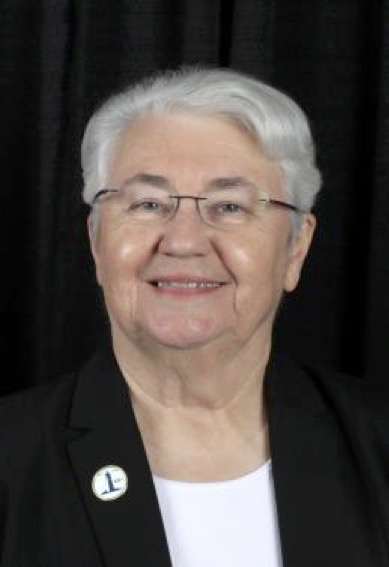
Barbara Strain, CVAHP, Bellwether Class of 2021, Board Chairman, Bellwether League Foundation, and Principal, Barbara Strain Consulting LLC, Charlottesville, VA
First risky decision: "Risky decisions most often involved reorganizing reporting structures and filling key positions. Most worked out well but be aware of the signs of actual performance vs. pre-conceived performance. Act quickly but fairly and set boundaries for improvement and above all else avoid disruption in accomplishing the intended goals. Try interim roles and adjust according to expected vs. actual outcomes."
Hardest decision: The one you try to make alone. There is too much at stake to assume you have the authority to make broad sweeping change alone. A sound business plan involving key internal and external resources, metrics, executive leadership, affected service lines, IT, finance, builds the case to make the hard decisions."
Bad decision: "Despite developing a solid business plan, getting input and making the hard decision, but encountering too many human and physical barriers to overcome don't be afraid to go back to what was working. Learn every single day."

Charlie Miceli, Bellwether Class of 2023, Strategic Advisor for Network Finance, The University of Vermont Health Network, Burlington, VT
First risky decision: "Agreed to run a parallel [materials management] system operation for 30 days vs. extending regression testing. No additional resources were available during parallel process, system processing took over operations/service provision, worked 80 hour weeks for a month vs. 50 hour weeks in prep.
Hardest decision: "Insource versus outsource; [you] need to be able to look in the mirror and determine if it is better to leverage/develop existing talent over a multi-year term or outsource in specific areas with experts and teach staff how to fish with experts and build a foundation of results to support internal development."
Bad decision: "Hired officers from each military branch as direct reports; you should not have all Type A staff. You need to mix it up."
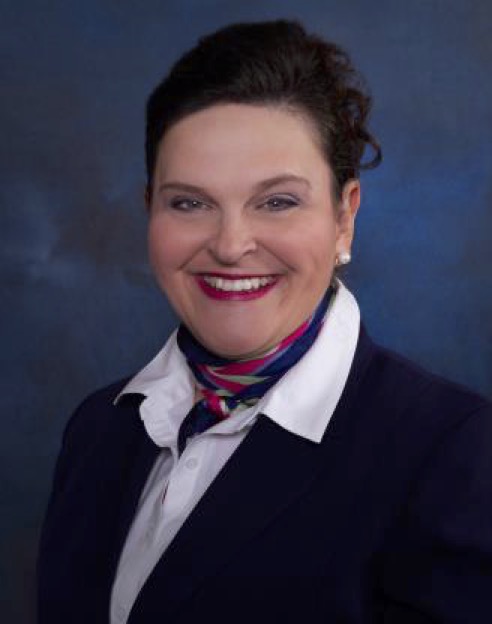
Angie Haggard, CEO, RDA Healthcare, Event Sponsor, Oak Ridge, TN
First risky decision: "Hiring someone that was 'nice' and did a great interview. Later discovered the person did not have the skillsets required. Lesson learned was to conduct skills assessment as part of the interview process."
Hardest decision: "Knowing when to increase supply chain resources to accomplish system goals versus utilizing the existing staff to avoid burnout."
Bad decision:" Decided to develop a dashboard to measure team performance. Realized after several weeks into the development that a simple dashboard would suffice to share the team successes.
Lesson Learned: Don't let perfection be the enemy of success."
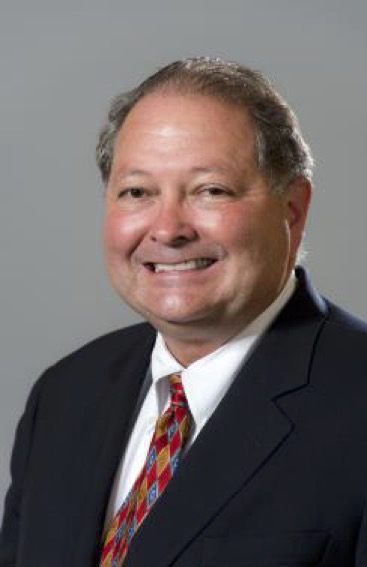
Rand Ballard, Chief Customer Officer, Vizient Inc., Founding Sustaining Sponsor, Irving, TX
First risky decision: "I started my healthcare career with American Hospital Supply, which was purchased by Baxter, then sold to Allegiance, and finally to Cardinal. I was offered one of the president's jobs at Cardinal and decided to take the road less traveled to MedAssets. That decision to go to MedAssets involved leaving a completely safe environment and taking a risk; one I don't regret for a minute!"
Hardest decision: "In my opinion, the key to navigating hard decisions is to be well networked clinically and operationally within the healthcare organization. This develops a platform that will support changes that may be deemed difficult otherwise. It's all about the governance and value analysis being set up front that allows you to implement change."
Bad decision (or could have been if I had followed through on an assumption): "When Vizient acquired MedAssets, I assumed that I would no longer be with the company and would do something else in healthcare. But deciding to accept a leadership position at Vizient taught me about the power of embracing and leading teams through change. Controlling your own destiny by combining new and old ways of working can be one of the most rewarding things ever."

Tina Vatanka Murphy, President & CEO, GHX, Platinum Sustaining Sponsor, Louisville, CO
Hardest decision: "The hardest decision in healthcare supply chain management is balancing cost-efficiency with patient care quality. Leaders are constantly faced with prioritization challenges — from contract decisions and supply disruptions to workforce management and supporting an array of new care locations. Understanding the criticality of each decision and its impact on patient care must drive prioritization, but often that information is either not available or difficult to surface when needed. This complexity makes it challenging to strike the right balance where financial sustainability and exceptional patient care coexist. Establishing a clear, strategic approach is essential. It helps filter through the noise, allowing for more informed, courageous decision-making. By focusing on the long-term implications and patient outcomes, I think leaders are best positioned to navigate these tough decisions with greater confidence and clarity, ensuring that both cost-efficiency and care quality are maintained."
First risky decision: "My first 'risky' decision came early in my career when I invested significant time and energy into a new initiative without being entirely sure of the outcome. The decision was risky because it involved venturing into uncharted territory, where the potential benefits were unclear, and failure was a real possibility. While the initiative didn't yield the results I had hoped for, it taught me a valuable lesson: expecting risk-free decisions would halt innovation and progress. We can be thoughtful about decisions in terms of how we will quickly assess and course-correct if necessary. What's important here is there need not be an expectation of perfection in decisions, but there should be an expectation that we will be disciplined enough to understand whether we got the expected outcomes and if not, why not — and course correct. At GHX, we improve the fidelity of our decisions by spending time with customers and thought leaders to understand their needs and by continually surveying our team to ensure GHX is a great place to work. By grounding decisions in these two pillars — customer satisfaction and employee well-being — we can take bold decisions that drive innovation and contribute to the long-term success of the company.
Bad decision: "One decision in my career that didn't go as planned was when I launched a new initiative without fully assessing the potential risks — what I now recognize as a 'one-way door' decision. At the time, I viewed it more like a 'two-way door,' thinking we could easily pivot if things didn't go as expected. However, the impact was more significant than anticipated, and the quick fix I had hoped for wasn't possible. The lesson I learned is that decisions are not static; they're part of an ongoing process driven by underlying reasoning. Understanding the nature of a decision is crucial. For 'one-way door' decisions, where there's no easy way back, more time and energy must go into planning and mitigating potential risks. Conversely, with 'two-way door' decisions, the focus should be on the ability to quickly reassess, and course correct when things don't go as expected. This approach has taught me the importance of making informed decisions AND having the fortitude to adapt when necessary. It's through this continuous learning process that we refine our decision-making and improve our outcomes over time."
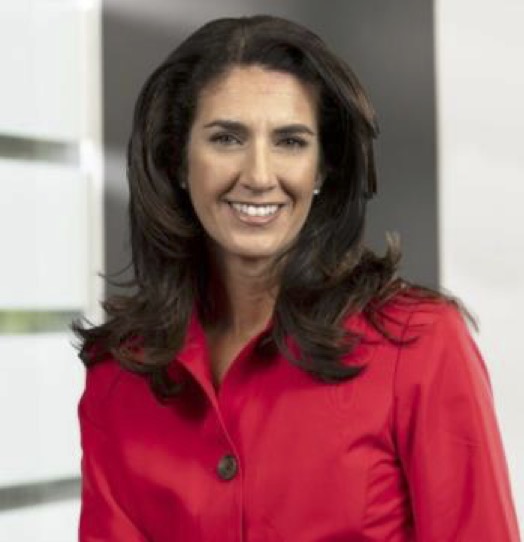
Marisa Farabaugh, Bellwether League Foundation Advisory Council Volunteer, Senior Vice President and Chief Supply Chain Officer, AdventHealth, Bronze Sustaining Sponsor, Altamonte Springs, FL
First risky decision: "I'm constantly evaluating risk on all of my decisions. I try not to get blindsided and often reflect on conversations later in the day to unpack perspectives or other things I may have missed earlier. All this to state, I am not risk averse, and I like to take risks of which I understand the consequences. I have taken risks from the start of my career and every time I get a new department of which I have much to learn. But each time I do take a risk, I am fully ready for a variety of different outcomes and have mentally sorted next steps beyond the current one."
Hardest decision: "I think all hard decisions are related to people, regardless of the department. The most important decisions you can make are who you will hire to perform important tasks, cast a vision, and lead their own teams. Getting this decision right is critical and usually up to the leader, though I like to have different perspectives weigh into the interviewing process. Terminations are also very hard and difficult decisions every single time."
Bad decision: "There is no decision that fully goes as planned, and that is a great thing! We are constantly improving, changing, refining, decisions all throughout the lifecycle. We don't let it slow down progress, but we do get to better implementations by being open to new ideas and input along the way. I never look at it as a win or loss. When you focus on the goal, there is no room to worry about how it impacts you, only about how to achieve the best solution for the company.
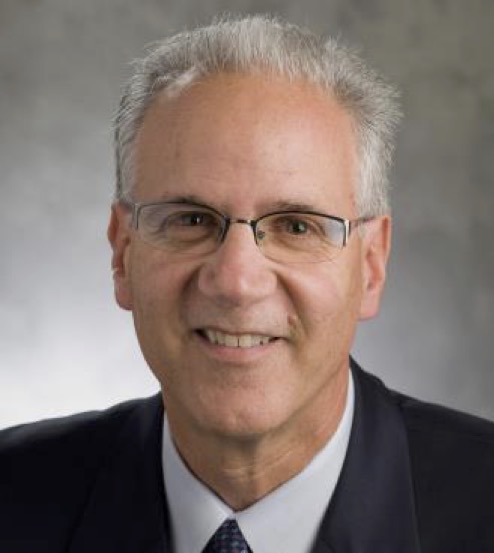
Tom Lubotsky, Bellwether Class of 2022, Vice President, Supply Chain Management, Allina Health, Minneapolis, MN
First risky decision: "Placing a central pharmacy receiving and distribution center in a building where the infrastructure to accommodate was not immediately present. While it met the objectives of leaning out on site inventories and providing a more reliable method of assuring fulfillment, it was too costly to build and support. We ended up shutting it down and moving these services to an old Pfizer building that offered the built-in infrastructure efficiencies of sustaining these services."
Hardest decision: "One of the hardest decisions rests with determining if there is a strong enough value for purchasing new products and technologies. Given the focus on keeping costs down but not at the expense of advancing patient care requires strong measurable clinical evidence which may not always have an immediate impact, but a lagging one that may take some years down the road for it to manifest. Further, truly understanding the downstream clinical benefits that new products may offer (e.g., reduction of pharmaceutical therapy; likely readmissions)) are imperative to consider when evaluating these new products and technologies."
Bad decision: "I have learned that structuring and pacing initiatives where I have decided to move forward, which require capital investment but also executive understanding for advancing supply chain maturity need to be cultivated. Learning and feeding the 'appetite' of an organization at the right time is vital to successfully progressing a supply chain strategic plan. As part of this cultivation, continuing to educate leaders on the merits and value a mature supply chain can bring must be an ongoing effort. In this way, these decided initiatives brought forward already will have an understood context among executive leaders and will be much easier to advance."

Mike Langlois, Board Treasurer, Bellwether League Foundation, Healthcare Supply Chain Resource, Langlois & Associates LLC, Grosse Pointe, MI
First risky decision: "My most risky (and regrettable) decision was to not engage in an issue when I knew in my gut something was amiss, but rather trust my downline team. Empowerment is a powerful characteristic in a leader, but sometimes it's better to follow your gut. This issue exploded after I decided to let it run its course, resulting in several members of my team being fired for mismanagement."
Hardest decision: "The hardest decisions for me over my career were always the personnel decisions. Hiring, firing and who to promote always caused me angst. I don't like to judge others, but in a management role, that is what you have to do when deciding who to hire, who needs to be fired and who deserves to be promoted over other candidates."
Bad decision: "The riskiest decision I made, as described above, eventually cost me a promotion as an administrator in our Nursing Department. I was extremely disappointed at the time; however, this promotion would have taken me out of what I now view as a very successful career in healthcare supply chain. Sometimes disappointment in the moment works out to be a positive down the road.
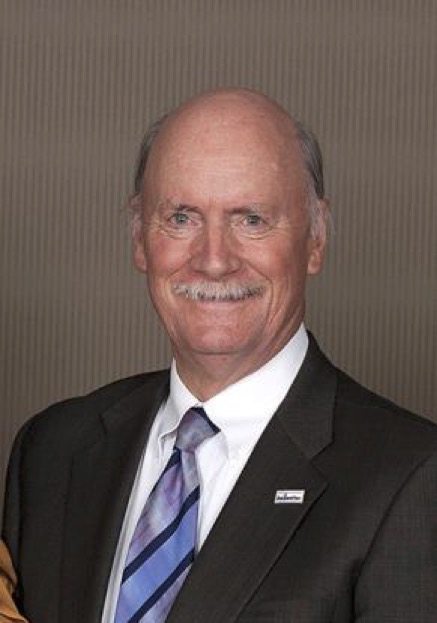
Richard Perrin, Bellwether Class of 2014, CEO, Active Innovations, Annapolis, MD
First risky decision: "One of my early and somewhat risky decisions was supporting clinical value analysis activities on a critical issue involving handling of laboratory specimen containers. The issue was raised during one of our standardization meetings, and taken up with department leadership in clinical labs who did not think the issue warranted additional concerns. The issue made it all the way to the top of the organization with backing from the CEO, and the results strengthened our standardization and value analysis activities.
"Lots of other risky situations come to mind, but the real outtake from this is that if you are not taking at least some risks, you stand the potential of falling behind."
Hardest decision: "Cost benefit analysis is always fraught with numerous issues to determine the best path forward. There are always some who will disagree so the path must be based on careful analysis and clearly written objectives and outcomes from study activities. You always need to seek outside perspectives to enhance the sound foundations of diverse implications from issues where you may have limited knowledge (even though you may think you have all the knowledge required)."
Bad decision: "Well, selling the company required the need to structure legal requirements clearly. Lawyers advised as to the pitfalls, and I didn't think they would work that way, but they were right. Fortunately, they had provided the essential guidance and written protection for the contracts used going forward.
"It is most important to carefully consider all the potential ramifications of contracts that you may want to establish for products, services, warehouse space, etc. It is most important when considering decisions with contracts to seek outside expertise in areas where you may not have the best possible, or broadest base of understanding. You may think that you have considered all of the possibilities and don't need any additional assistance to 'bog the process' down, but it is almost always helpful to have an extra pair of eyes look at potential for issues from a different point of perspectives.
"This might include consideration of legal issues and regulatory perspectives, consideration of industry standards that continue to evolve, financial perspectives both from within the organization as well as impacts from outside forces and external regulations governing processes.
"Other issues are always to be aware of the needs for quality and safety in all that you do or that you ask others to do on your behalf or as part of your direction."

Dee Donatelli, R.N., MBA, Bellwether Class of 2015, Senior Director, Spend Management, symplr, and Principal, Dee Donatelli Consulting LLC, Austin, TX
First risky decision: "Moving from a safe job to an entirely different type of job is a big step in anyone's career, however, the risk may be the best choice you ever make. In today's environment I believe it to be mandatory to take risks and move from job to job or even change industries entirely. As a nurse moving into supply chain most thought I was out of my mind, and it was the best decision I have ever made."
Hardest decision: "Change is absolutely the hardest decision to commit to. Change is not for the faint at heart, it takes a lot of hard work to change. Doing things the same is safe but if you know that there is a better way or even think that there has to be a way to do this more efficiently, then change!"
Bad decision: "Taking a role where many ahead of you had failed; thinking you could fix the problem is a huge challenge and a hard lesson. There are indeed times when no matter how skilled, knowledgeable or experienced you are there is just no fixing the situation. Culture eats strategy. When you recognize that no matter what you do or how hard you try you are not going to succeed then make the right decision and move on."

Amanda Chawla, MHA, FACHE, CMRP, Ammer Honoree Class of 2024, Senior Vice President and Chief Supply Chain Officer, Stanford (CA) Medicine
First risky decision: "The first risky or bad decision I made in my career as a new leader in supply chain management was linked to what should have been a process improvement activity with inventory management. At the time, I was relatively new to Supply Chain and learning how we operated; but we were having constant issues with inventory accuracy, compliance on the use with the equipment, frequent stockouts and overstocks. Instead of thoroughly analyzing the problem, I hastily concluded that the root cause was a piece of equipment, and that by replacing it would solve the problem.
"I convinced the organization to spend several hundreds of thousands of dollars in a new equipment. However, once we implemented things did not change. It became evident that the issue was not with the technology but with our workflow and practices. The real problem lay in how our inventory management processes were structured and executed, which led to non-compliance and inefficiencies. This experience taught me the importance of diving deep into understanding the underlying issues before jumping to conclusions. Putting yourself in the shoes of the individual that is using the equipment, the customer, and really understanding the problem you are trying to solve before jumping to conclusion with a solution. I have learned to slow down to diagnose the problem. There is a reason why we say measure twice cut once."
Hardest decision: "Outside of HR/People discussions the hardest decisions center around where to invest resourcing and time. What I am talking about is making critical trade-offs and determining which priorities are the vital view. Having the courage and to say no to important work is a must when you are trying to reform your operations, develop a resilient and agile organization, develop strong supplier partnerships and support your people while trying to advance the work. With limited resources allocating where to spend time, money and resource time is ever evolving. Because of how large the supply chain/network and the vast work in our industry it requires leaders to make tradeoffs and balance the complexities."
Bad decision: "I've made many decisions and mistakes throughout my career, and I keep learning from them. The ones that stick with me the most are when I didn't engage a key stakeholder or jumped to conclusions without fully hearing the other party's perspective. For example, there have been times when I made a business decision without consulting a critical team member, only to realize later that their input could have made all the difference. Or, in the rush to close out an issue, I missed valuable insights because I didn't take the time to listen properly.
"These experiences have collectively taught me an important lesson: slow down and make sure you're really listening and engaging with everyone involved. It's about taking the time to hear different perspectives and ensuring that all stakeholders, team members, and partners feel heard and valued. This approach not only leads to better decisions but also strengthens relationships and builds trust within the team."

Ed Hisscock, Bellwether Class of 2022, Senior Vice President, Supply Chain, Trinity Health, Livonia, MI
First risky decision: "Age 23, left a secure job with AT&T to take a position in healthcare. Felt the pull of the purposeful work we do in this industry and answered the call. Never looked back."
Hardest decision: "Bucking the status quo. There is a lot of momentum and incentives motivating leaving things just as they are. Regardless of how boneheaded or wasteful they may be."
Bad decision: "Retirement. Just can't seem to get there. Seriously though, I love what I do and have done. I do not look back on any particular mistake or success with reverence. I learned from the mistakes and built on the successes. They were all just part of the journey. I could have dwelled on anyone and spun out, but that would not have served my purpose, and I view my career as a purpose, not a job."